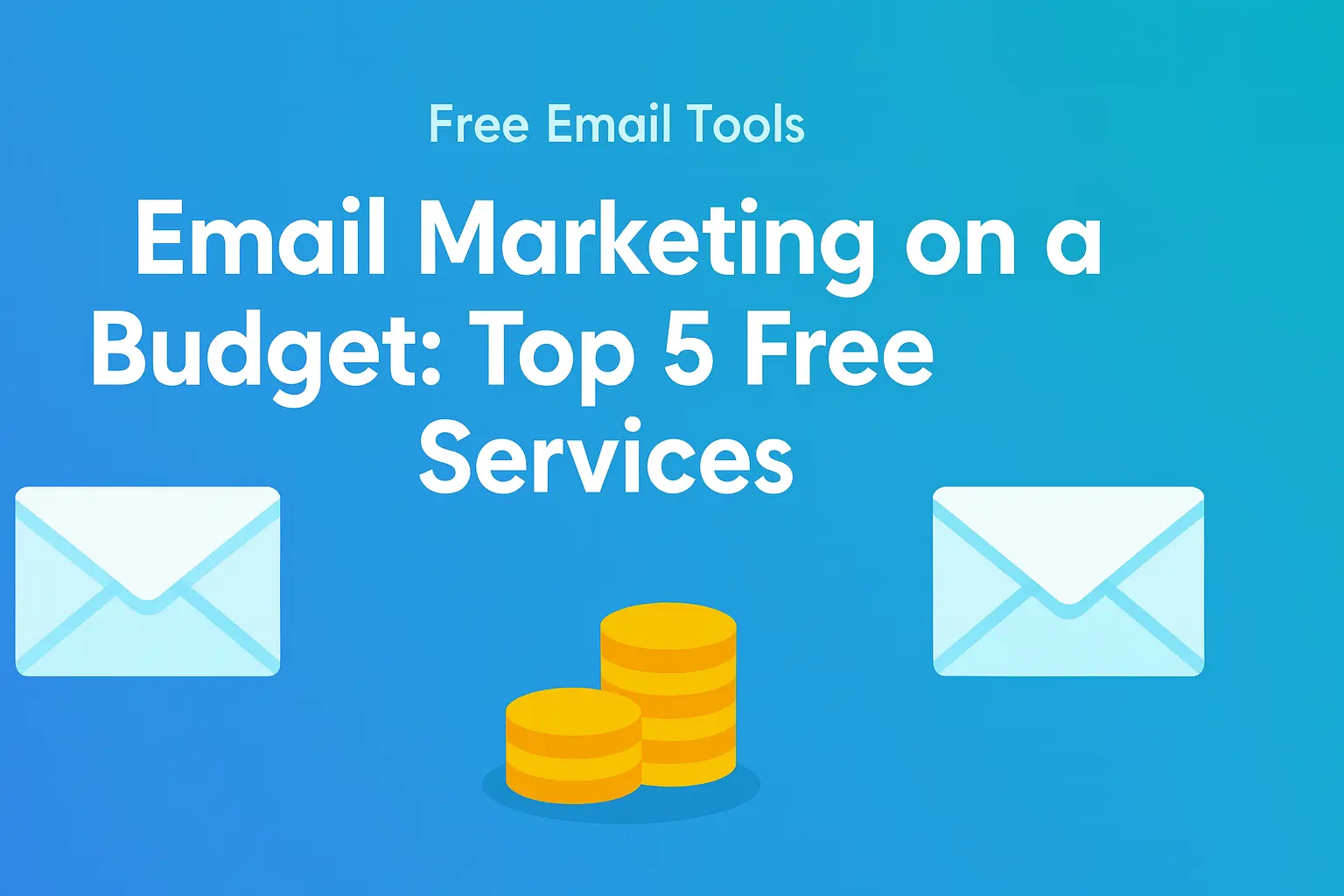Uncategorized
Email Marketing on a Budget: Top 5 Free Services
Ronnie Nelson

You Don’t Need Big Bucks to Build an Email List
(Spoiler: I started mine while my bank balance was flirting with double digits.)
1. Quick Back-Story
Two summers ago I had zero subscribers, a grand total of $0 budget, and a dangerous habit of doom-scrolling Twitter threads about “list-building hacks.” I finally stopped lurking and signed up for Mailchimp’s free plan during a coffee break. Forty-five minutes later my first opt-in form was live. By the end of the month 87 people had joined—mostly friends, but still real humans I could write to whenever I wanted. That little win convinced me you can get momentum without spending a cent.
2. Why Email Still Beats Every Algorithm
Ownership: TikTok can throttle reach overnight; an email list is yours outright.
Signal-to-noise: Inboxes are crowded, sure—but they aren’t random. If someone opens your newsletter, you’ve got their full attention for at least a few seconds.
ROI: Data from every marketing benchmark shows email bringing the highest dollar-per-dollar return—largely because there’s almost no marginal cost once you’re set up.
3. How to Judge a “Free” Plan
Send cap – How many total emails can you blast each month?
Subscriber cap – How many contacts can live in your list before you pay?
Core features – Do you get automation, landing pages, segmentation?
Ease of use – Drag-and-drop editors save headaches (and caffeine).
Branding – Most tools tack on their logo; decide if that’s a deal-breaker.
4. My Five Favorite Free Tools for 2025
4.1 Mailchimp
Free tier: 500 contacts, 1,000 emails a month (max 500/day) (mailchimp.com) Why I like it: clean UI, gorgeous templates, perfect for day-one users. Trade-offs: the logo stays, and you’ll outgrow the send cap fast.
4.2 Brevo (formerly Sendinblue)
Free tier: Unlimited contacts, 300 emails per day (brevo.com) Why I like it: marketing automation and SMS campaigns on day one. Trade-offs: the editor feels clunky and the dashboard can overwhelm newbies.
4.3 MailerLite
Free tier: 1,000 subscribers, 12,000 emails a month (mailerlite.com) Why I like it: slick minimalist interface, built-in landing pages and pop-ups. Trade-offs: must pass an approval check, and their logo rides along until you pay.
4.4 Kit (formerly ConvertKit)
Free tier: Up to 10,000 subscribers, unlimited landing pages, 1 basic automation (convertkit.com) Why I like it: designed for creators—great tagging, paid-newsletter tools, and you can sell digital products without leaving the platform. Trade-offs: visual automations are limited on the free plan; email editor is plainer than most.
4.5 HubSpot
Free tier: 2,000 emails a month plus full CRM (community.hubspot.com) Why I like it: perfect if you want email, sales pipelines, and live chat in one place. Trade-offs: tight send cap and the HubSpot footer stays until you upgrade.
5. Zero-Subscriber Launch Plan
Plant a form everywhere – Homepage, blog sidebar, LinkedIn bio, even your email signature.
Offer a bite-sized freebie – Checklist, template, mini-course… anything that solves a quick pain.
Write a killer welcome email – Remind them why they signed up and deliver the freebie right away.
Email weekly (minimum) – Consistency earns trust; once readers expect you, open rates climb.
Lead with value, then sell – Teach, entertain, or inspire four times for every one pitch. Your list will forgive the occasional offer when you’ve earned goodwill.
6. Final Pep Talk
Big budgets are nice; direct access to real people is nicer. Pick any one of the tools above, launch a form before dinner tonight, and start collecting those first few addresses. You’ll learn more from talking to ten subscribers than from another week researching “perfect” software.
Bonus: When your list starts to grow, you’ll want branding that looks legit. Our BrandByte AI brand-kit generator spins up logos, colors, and font stacks in five minutes—so your newsletter looks as good as it reads.
Happy sending!
